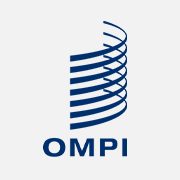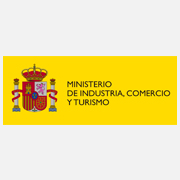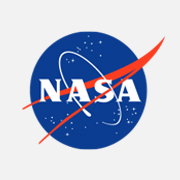Valorisation, according to Law 14/2011 of 1 June on Science, Technology and Innovation, is understood as the addition of value to the knowledge obtained through the research process. It includes all the processes that bring the results of publicly funded research closer to all sectors and social actors, as well as the processes that generate social value through various manifestations and types of transfer.
Thus, valorisation consists of adding value to research results that can be used economically or socially, with the aim of making them appealing to companies or other types of entities and, consequently, leading to their use or acquisition.
The process of valorisation, from the point of view of universities, can therefore be divided into five main stages:
- Identification of results: formal communication by researchers of the results obtained when they consider that they can be exploited.
- Assessment of the innovation and transfer potential of the result.
- Protection, where appropriate, of intellectual and industrial property rights.
- Commercialisation. The promotional action that allows the research results to reach and be made known to people and organisations that may be interested in their economic or social exploitation.
- Proof of concept. Additional tests, demonstrations or studies that technically validate the interest of the results for economic exploitation under real, non-laboratory conditions.
Research results generated by the research activities of public research centres, such as universities, may be transferred through one of the following three channels:
1) licencing to existing companies
2) collaborative projects between universities and companies to further develop or industrially validate a research result produced at the university, where an option to licence is considered if the result is successfully validated
3) the creation of a new company whose corporate purpose is the commercial exploitation of the result (a university spin-off or a knowledge-based company)
Which transfer channel is chosen depends on a number of criteria, including:
1) the innovation potential of the result
2) the market potential (business idea, existence of market niche, possible competitors, competitive advantages, companies interested in its transfer)
3) capacity and involvement of the research team
Knowledge or technology transfer, following the valorisation process, is the act in which rights to the knowledge or technoogy are transferred by contract with varying degrees of restriction and exclusivity. The transfer is technically a legal act, but it involves both a relationship and an exchange of technical information, while simultaneously creating economic relationship in the context of a given market.
Promotional and commercial activities in general form part of the valorisation and knowledge transfer process. The product or service in question is, undoubtedly, unique due to its intangible nature and its early stage of development, which requires changes to traditional marketing concepts and actions. The novelty of some research-based products will create new needs and new markets. The public and social nature of some of these products or services will have an impact on the profit and value considerations that are usually taken into account in marketing.
This phase of the valorisation process focuses on the preparation of technology offer files, research and contact with companies, mailing or participation in sectoral fairs, dissemination of technology offers on the web and other media.
These files are available on the webpage: https://www.uv.es/oct. They contain the scientific and technological offer of the UV, based on the research lines and capacities of the research groups recognised by the Universitat de València in accordance with the Regulation of Research Structures of the UV, approved by ACGUV 48/2013.
In addition to the active search for and contact with potential licensee companies interested in exploiting the research results, Scientific and Technological Offer (STO) files are prepared for their dissemination, either through our own Internet portals or through technological marketplaces. There are numerous marketplaces where these offers are displayed in a standard format and potential interested parties are sought.
The STO file is the presentation chart of the technologies developed by the groups and their research capabilities. In simple and straightforward language, it highlights, among other things, the possible solutions to business needs, the use and the advantages offered by these technologies. The STO of a patent-protected result is a document that uses business language to highlight the competitive advantages that this technology offers to potential licensee companies, and always showing non-confidential information.
Licence agreements
The research results generated by the research activity of public research centres, such as universities, can be transferred through different channels, one of which is licences to third parties.
A licence agreement is an agreement by which the holder of an industrial or intellectual property right (the licensor), while retaining ownership, authorises a third party (the licensee) to use or exploit that right under the conditions set out in the agreement itself, i.e. it allows the licensee to exercise certain powers of exploitation. Thus, the licensor, who is and remains the owner of the result, grants an exploitation right to an external company or entity (the licensee), but always retains ownership, as in the case of leasing an asset.
Different licensing strategies can be adopted. The licence can be granted on an exclusive or non-exclusive basis, and it may be an unlimited licence or it may be limited to a specific territory, a particular use or application, or both.
Material Transfer Agreements
Material transfer agreements (MTAs) are agreements between two institutions (provider and recipient), either domestic or foreign, to transfer research material and to agree the terms and conditions of the exchange.
The most commonly transferred materials are biological materials (such as reagents, cell lines, plasmids, vectors, etc.), but MTAs can be used for other types of materials such as chemical compounds and even for some types of software.
For the provider, i.e. the institution making the material available for further research, it is crucial to clarify:
- How the material will be used (if the material is of human origin, the provider has a legal responsibility for the ethical and safe use of the material).
- What restrictions will be placed on the dissemination of results to protect the research itself.
- Who owns the results obtained from this transfer (derivatives) and how any commercial value will be handled. Hence the importance of signing an MTA between both parties (the recipient and the provider).
When material is received from another organisation for use in research, and this material is accompanied by an MTA, it should be noted that there are certain critical aspects that may limit the work. The following terms and conditions should therefore be carefully considered:
- Authorisation and duration of use.
- Publication rights.
- Confidentiality.
- Right to further distribute the material, i.e. the possibility of leaving material to other collaborating research staff, etc.
- Anything concerning the sections that affect the ownership and exploitation of the future results of the research itself.
Non-disclosure Agreements
A Non-Disclosure Agreement (NDA) is a contract entered into by one or more parties for the purpose of exchanging confidential information in a secure manner, guaranteeing that such information will be kept secret and confidential between the parties. It sets out the responsibilities and obligations of all parties to ensure that the information exchanged is not disclosed to or used by the other party without permission or consent.















